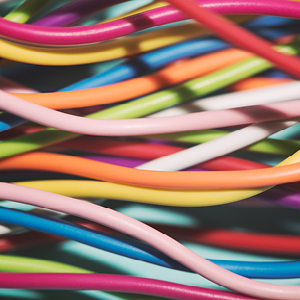
Electrical
Without doubt, the materials used in electrical applications like building and communications wire, fiber optic cabling and conduit must attain high standards of reliability and safety. PVC/vinyl is the material used most frequently in wire and cable insulation and jacketing, as well as in rigid nonmetallic (NM) conduit and cable management systems.
Electrical and communications wiring can easily be called a building’s nervous system. With few exceptions, reliable wiring is crucial to the day-to-day activities that go on within any home or building, especially with our dependence on computers and the Internet. At the same time, the electrical currents that enter and leave buildings can be quite dangerous, so the safety performance of electrical products must be a top priority.
Wire and cable constructions range from the simple – such as building wire – to the complex – such as power cable – with a carefully selected combination of materials that insulate the conductor. These layers are essential to electrical reliability and safety, protecting the conductor from moisture, dirt and damage. Flexible vinyl is the material most commonly used in each of these insulation components; in fact, 55 to 60 percent of all wires and cables are manufactured using vinyl. At the same time, rigid vinyl is widely used in conduit, electrical switch boxes, raceways and other cable management products.
Although vinyl electrical components are frequently used in conjunction with other materials, vinyl brings many important safety and performance characteristics to any wire or cable construction. For example, vinyl electrical products provide excellent properties at low cost, and are particularly well suited to meet the concurrent electrical and fire safety requirements that contribute to life safety in building design.
The performance standards set for these products by the National Electrical Code are extremely stringent, considered by some to be the toughest in the world. Vinyl has met the high standards required by specifiers and building owners for more than 50 years and today is one of the most widely used and most trusted electrical materials.
For more information and resources on vinyl cables and wires, please visit the Chemical Fabrics and Film Association (CFFA).

